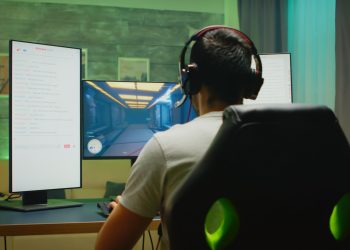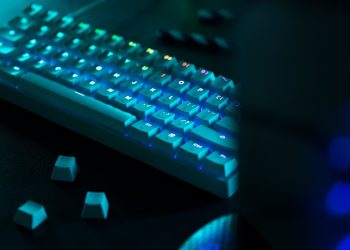Ayear ago, Valve released a mix of PC and console for gamers, and everything seems to indicate that the idea represented by Steam Deck has caught on. Other companies, including ASUS, want to join the growing trend of “Switch competitors” before our eyes.
Ni to Switch, ni to laptop
Why the quotation marks at the end of the introduction, you ask? Because it is difficult to treat the Valve device as a direct competitor of the Nintendo console – both the target group and the capabilities of the equipment are completely different from each other. Steam Deck stands astride between a gaming console and a portable computer, but over one and a half million units sold show that there is a desire among players to own such equipment. ASUS ROG Ally may become the number one choice in this category for many.
So how does one of the most “true” gaming April Fool’s jokes look like next to Far Cry 3: Blood Dragon or go-karts in Arma 3 ? According to the manufacturer, the “exceptional gaming experience” in ROG Ally comes from the combination of four features: Intuitive, Immersive, Inclusive and Incredible.
Ergonomics above all
Equipment such as ROG Ally must, above all, be suitably comfortable and easy to use – without it, players would quickly complain about “non-intuitive”. After many prototypes, ASUS managed to get the right form. As a curiosity, I will add that the materials mention the company’s 5-year journey through various concepts. This means that work on the device began at least a year after the release of the Nintendo Switch.
The basis of the control is the “xbox” system with the left stick at the top and the D-pad at the bottom, seen in earlier materials, unlike in Sony equipment. In addition to the side, textured buttons, under the middle finger players have access to a macro button that they will be able to configure according to their needs. The entire structure, decorated with the logo and the ROG logotype, should lie securely in the hands thanks to the three-dimensional, triangular texture on the sides of the device.
ASUS knows how tiring it can be to hold a heavy device in your hands. ROG Ally boasts a weight of 609 grams – 61 g less than Steam Deck, but it lacks a lot to the result of Nintendo Switch (420 g with joy-cons attached).
As part of the slimming treatment (about 80 g more in the first prototypes), the manufacturer designed the top of the housing in such a way that there is no direct contact between the APU and the panel, so that the front of the device does not heat up during intense gameplay. In addition, some frames are made of special, lightweight aluminum, and the cooling fins have been slimmed down by 0.1 mm.
For 5 years, the manufacturer has not been idle in terms of testing the strength of sensitive elements. The “A”, “B”, “X”, “Y”, D-Pad buttons are to withstand about 10 million presses, and the analog sticks – 2 million full revolutions.
A “snap” on 7 inches
People who are most disappointed on the Steam Deck screen, when they see the ROG Ally technical specification, can quickly throw Valve’s equipment into the closet or pass it on to someone else.
Although the screen in Steam Deck gains a slight advantage in places (brightness, contrast), color coverage or Full HD resolution make ROG Ally outclass Valve equipment. In addition, the Taiwanese manufacturer used screen protection with Corning Gorilla Glass Victus and a special Gorilla Glass DXC coating that reduces the amount of reflected sunlight, and the light transmittance is ~99% (~96% for ordinary glass).
If you are wondering why the company did not opt for an even better OLED panel, the answer is simple – he wanted the matrix to be characterized by both high resolution and image refresh rate. As the manufacturer failed to find such a panel with a diagonal of 7 inches, an LED screen was used (and you could cut the 0.2 inches and put on a smartphone screen from the Samsung Galaxy S23 Ultra or iPhone 14 Pro Max … ;). Instead, ASUS boasts the presence of a virtual 5.1.2 audio system with support for Dolby Atmos, Hi-Res Audio or Smart AMP.


















